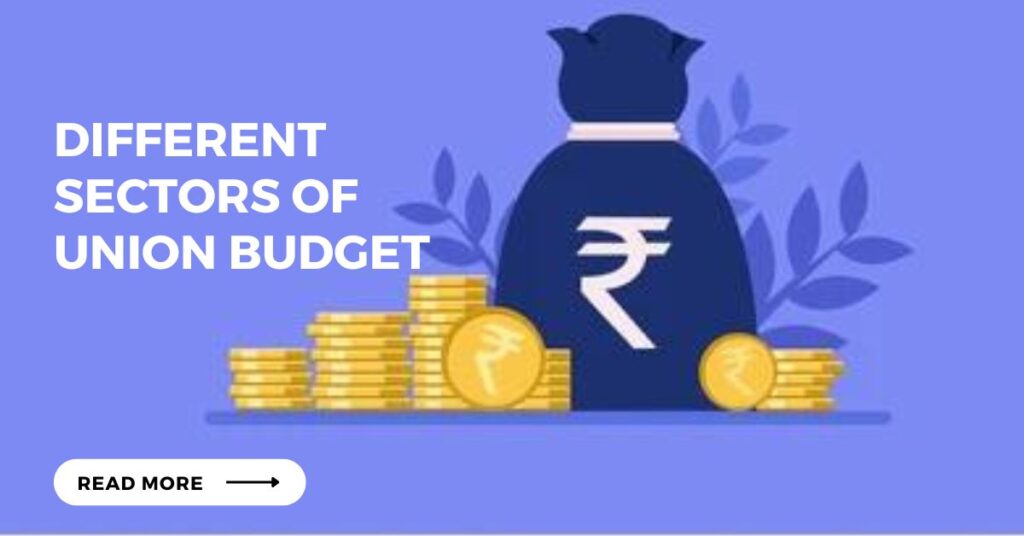
The Union Budget is the annual financial statement presented by the Finance Minister of India in Parliament. It presents the government's revenue and expenditure for the upcoming financial year and outlines the government's economic and fiscal policies.
In our previous blog, we described the union budget and how it is prepared. In this blog, we will further discuss the different sectors of the union budget.
The budget is divided into two parts: the Revenue Budget and the Capital Budget.
The Revenue Budget includes the government's revenue from taxes and non-tax sources, as well as its expenditure on various schemes and programs. This includes items such as subsidies, pensions, and interest payments. The main purpose of the revenue budget is to ensure that the government's revenue matches its expenditure.
The Capital Budget, on the other hand, includes government expenditure on capital assets such as infrastructure, buildings, and machinery. This budget is used to finance the government's long-term development projects, such as the construction of roads, bridges, and airports.
Some of the important Sectors of the Union Budget that the finance minister focuses on in the budget speech are:
Agriculture is one of the most important sectors in the budget. The government allocates funds for various schemes and programs aimed at improving the livelihoods of farmers, such as the Pradhan Mantri Fasal Bima Yojana and the Pradhan Mantri Kisan Samman Nidhi. Additionally, the budget also includes measures to increase productivity and improve the marketing of agricultural products.
The government allocates funds for various infrastructure projects such as road construction, railway development, and urban development. The budget also includes measures to improve the ease of doing business and attract foreign investment in the infrastructure sector.
The government allocates funds for various schemes such as the National Health Mission, Sarva Shiksha Abhiyan, and the Pradhan Mantri Kaushal Vikas Yojana to improve access to healthcare and education. Additionally, the budget also includes measures to improve the quality of education and skill development programs.
The government allocates funds for various schemes such as the Pradhan Mantri Mudra Yojana and the Start-up India initiative to provide financial assistance and support to SMEs and startups. Additionally, the budget also includes measures to improve the ease of doing business for SMEs and startups.
The government allocates funds for various schemes to improve access to banking and insurance services, such as the Pradhan Mantri Jan Dhan Yojana and the Pradhan Mantri Jeevan Jyoti Bima Yojana. The budget also includes measures to improve the banking and insurance sector's regulatory framework and promote financial inclusion.
The government allocates funds for various schemes, such as the Digital India initiative and the Pradhan Mantri Gramin Digital Saksharta Abhiyan to promote the adoption of digital technologies and to improve access to digital services.
The government allocates funds for various schemes such as the Ujjawal Discom Assurance Yojana and the Pradhan Mantri Sahaj Bijli Har Ghar Yojana to improve power distribution companies' financial health and provide electricity connections to households.
Additionally, the budget also includes measures to promote the use of clean energy and to reduce dependence on fossil fuels.
The government allocates funds for various schemes, such as the Make in India initiative and the Pradhan Mantri Udyam Yojana to promote the growth of manufacturing and to provide financial assistance to small and medium enterprises.
The budget allocates funds for the defence sector, including the procurement of weapons, equipment, and other military hardware and the maintenance and modernization of existing equipment.
The budget allocates funds for developing and promoting science and technology in the country. This includes funding for research and development in various fields, such as biotechnology, information technology, and space technology.
The budget also includes measures to increase the government's revenue through taxation and other means. This includes proposals for changes in tax laws and measures to curb tax evasion and black money.
The budget also includes the government's estimates of its fiscal deficit, which is the difference between its revenue and expenditure. The government aims to keep the fiscal deficit within a certain limit, as a high fiscal deficit can lead to inflation and other economic problems.
The budget also focuses on the inclusion and empowerment of the marginalized section of society, especially SC/ST, OBC, minorities, women, and the differently abled.
The Union Budget is an important document that outlines the government's priorities and policies for the upcoming financial year.
The allocations and proposals in the budget have a significant impact on the country's economic and social development. It is closely watched by industry experts, economists, and the general public, as it can significantly impact the country's economy and the lives of its citizens.
Lakshmishree Investments is covering the Budget and also providing you with some general facts about it before Budget 2023.
